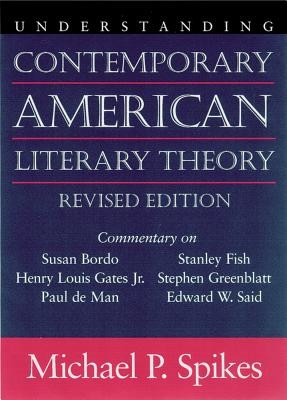
- We will send in 10–14 business days.
- Author: Michael P Spikes
- Publisher: University of South Carolina Press
- ISBN-10: 1570034982
- ISBN-13: 9781570034985
- Format: 12.7 x 17.5 x 2 cm, softcover
- Language: English
- SAVE -10% with code: EXTRA
Understanding Contemporary American Literary Theory (e-book) (used book) | bookbook.eu
Reviews
Description
An appraisal of six theorists who have shaped America's literary landscape
In this revised edition of Understanding Contemporary American Literary Theory, Michael P. Spikes adds Stanley Fish and Susan Bordo to the critics whose careers, key texts, and central assumptions he discusses in introducing readers to developments in American literary theory during the past thirty-five years. Underscoring the largely heterogeneous mix of strategies and suppositions that these critics, along with Paul de Man, Henry Louis Gates Jr., Edward W. Said, and Stephen Greenblatt, represent, Spikes offers concise analyses of their principal claims and illustrates how their works reflect a range of critical perspectives, from deconstruction, African American studies, and reader-response theory to political criticism, the new historicism, and feminism.
Spikes prefaces his study with a short history of theory and criticism in the twentieth century and then places each of the theorists within the larger context of contemporary criticism. He explains their specific strategies for interpreting literature, identifies the philosophical assumptions underlying those strategies, cites specific examples of how the strategies are applied to the reading of particular works, and notes possible objections to their theories. With this study Spikes renders the often complex arguments and technical language of contemporary literary theory in accessible terms and gives readers a clear sense of the movements that have dominated the field since the late sixties.
EXTRA 10 % discount with code: EXTRA
The promotion ends in 20d.09:14:22
The discount code is valid when purchasing from 10 €. Discounts do not stack.
- Author: Michael P Spikes
- Publisher: University of South Carolina Press
- ISBN-10: 1570034982
- ISBN-13: 9781570034985
- Format: 12.7 x 17.5 x 2 cm, softcover
- Language: English English
An appraisal of six theorists who have shaped America's literary landscape
In this revised edition of Understanding Contemporary American Literary Theory, Michael P. Spikes adds Stanley Fish and Susan Bordo to the critics whose careers, key texts, and central assumptions he discusses in introducing readers to developments in American literary theory during the past thirty-five years. Underscoring the largely heterogeneous mix of strategies and suppositions that these critics, along with Paul de Man, Henry Louis Gates Jr., Edward W. Said, and Stephen Greenblatt, represent, Spikes offers concise analyses of their principal claims and illustrates how their works reflect a range of critical perspectives, from deconstruction, African American studies, and reader-response theory to political criticism, the new historicism, and feminism.
Spikes prefaces his study with a short history of theory and criticism in the twentieth century and then places each of the theorists within the larger context of contemporary criticism. He explains their specific strategies for interpreting literature, identifies the philosophical assumptions underlying those strategies, cites specific examples of how the strategies are applied to the reading of particular works, and notes possible objections to their theories. With this study Spikes renders the often complex arguments and technical language of contemporary literary theory in accessible terms and gives readers a clear sense of the movements that have dominated the field since the late sixties.


Reviews